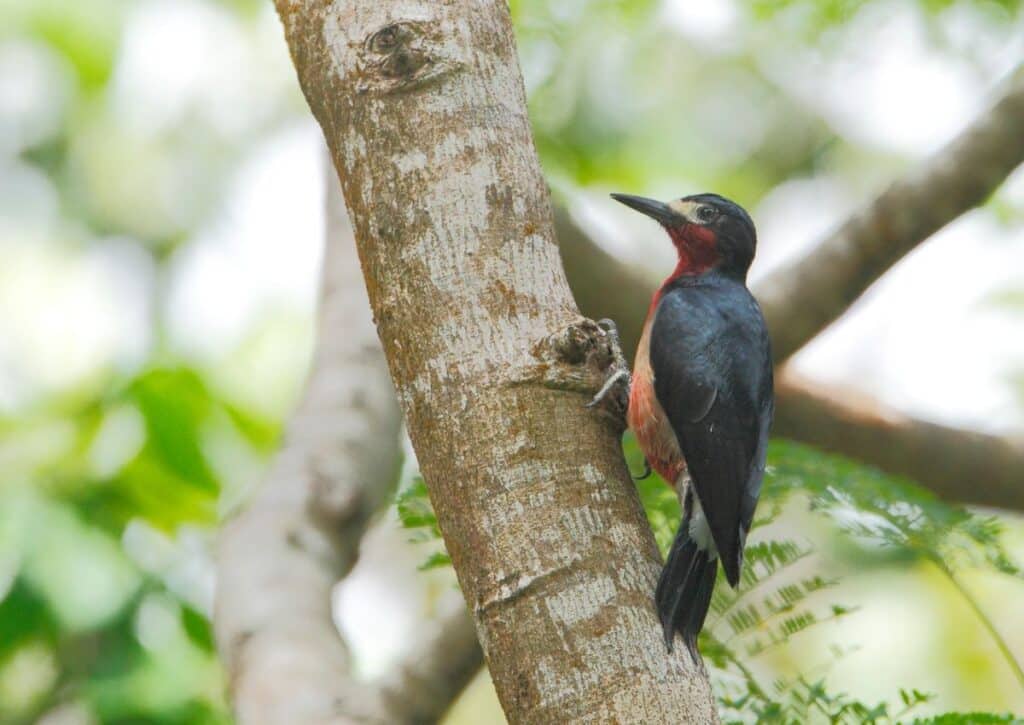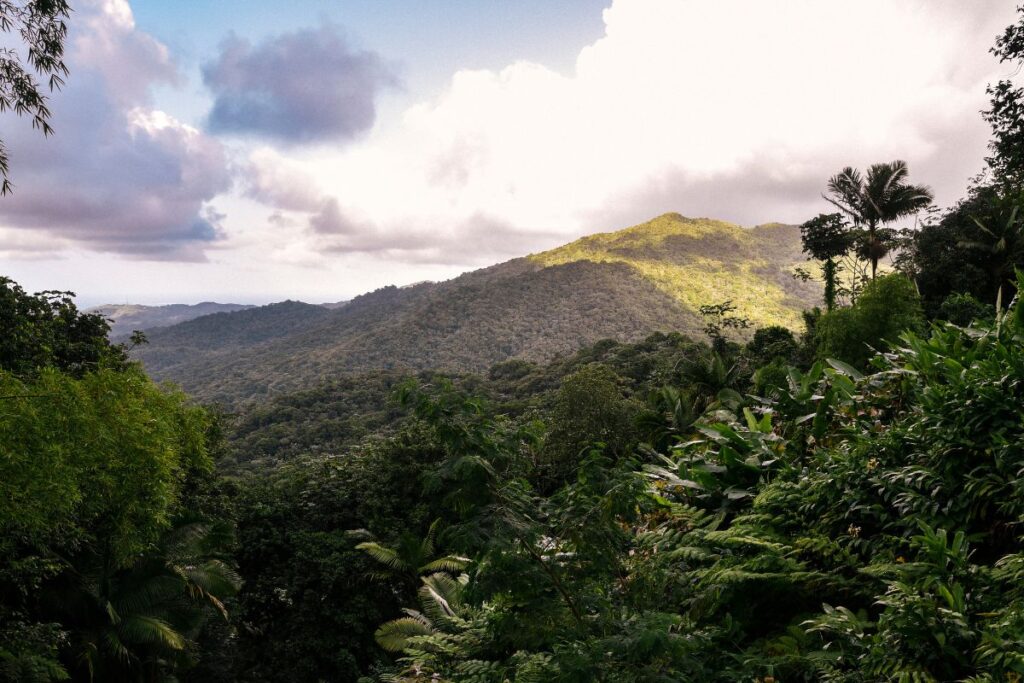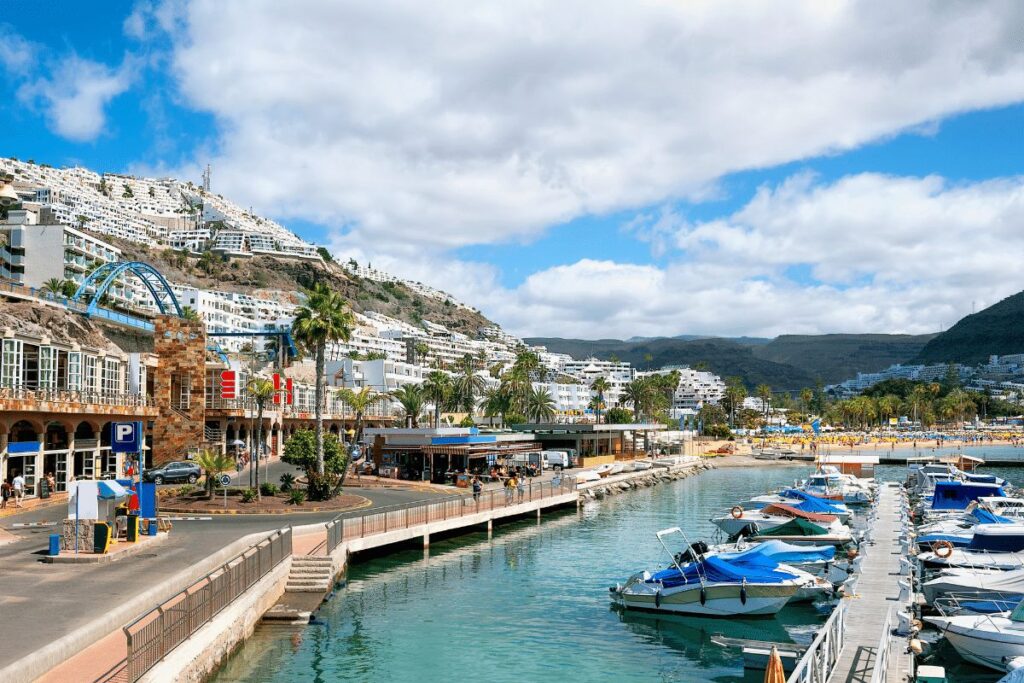Discover El Yunque's wildlife with our guide to 21 animals in El Yunque National Forest.
Ever wondered what it’s like to step into a living, breathing postcard? Well, buckle up for a virtual safari because El Yunque National Forest is the closest you’ll get! It’s not just a green masterpiece on the canvas of Puerto Rico, it’s a buzzing metropolis for the wild ones.
The stars? A quirky lineup from the show-stealing coquí frog that belts out tropical tunes, to the glinting Puerto Rican Emerald hummingbird zipping through the rainforest like a living jewel.
Here, the everyday hustle is a rustle through the leaves and a symphony of squawks, chirps, and howls. El Yunque isn’t just another forest; it’s a whirlwind adventure with a cast of creatures straight out of an animal enthusiast’s wildest dreams. From shadow-lurking bats to the sky-soaring Puerto Rican Parrot, these locals know how to keep things lively.
Join us as we trek through the untamed heart of Puerto Rico to meet the eclectic residents of El Yunque. Whether they’re flapping, hopping, slithering or swimming, each critter has a tale to tell.
So, let’s dive into this wilderness guide and uncover the 21 animals that turn El Yunque National Forest into a living, roaming, croaking wonderland.
Mammals in El Yunque
El Yunque National Forest, with its lush canopy and diverse habitats, provides a haven for a range of mammals.
Bats
Among the most captivating are bats, which play a critical role in the forest’s ecosystem. Several species of bats inhabit El Yunque, including the Antillean fruit-eating bat and the Jamaican fruit bat.
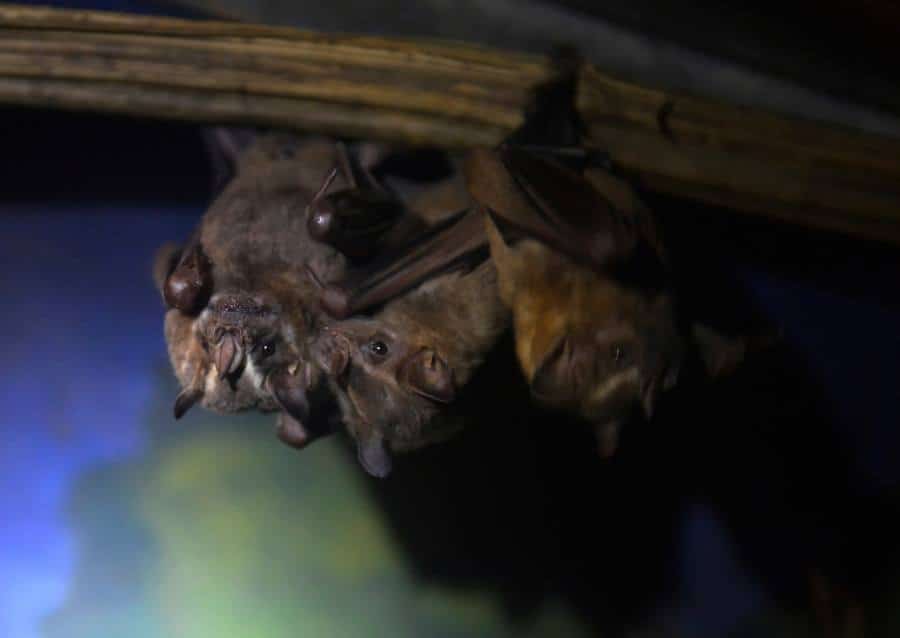
These nocturnal creatures are essential for pollination and seed dispersal, ensuring the continuous regeneration of the forest’s flora.
Their sonar-like echolocation abilities make them expert navigators in the dense rainforest, and their nightly hunts help control insect populations.
Small Indian Mongoose
Equally intriguing, though more controversial, is the Small Indian Mongoose.
Introduced to Puerto Rico in the late 19th century to control rat populations in sugarcane fields, this agile carnivore found its way into El Yunque and has since become a formidable predator.
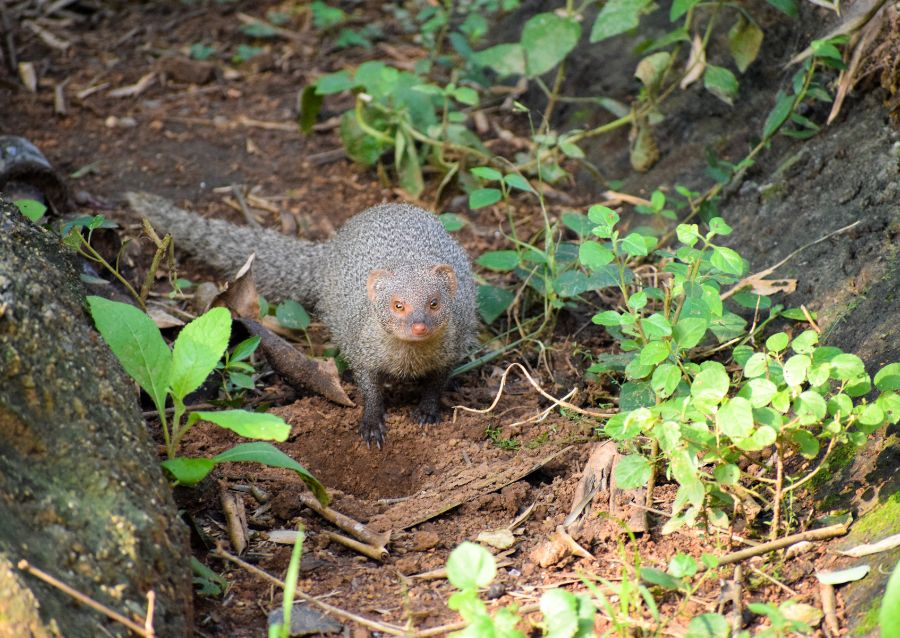
While they help control certain pests, their presence also poses a threat to native fauna, especially ground-nesting birds and reptiles.
The Small Indian Mongoose, with its keen senses and swift reflexes, has become a prominent figure in the forest’s dynamic, exemplifying the complex interplay of native and introduced species within El Yunque.
Birds of El Yunque
El Yunque National Forest is a beacon of biodiversity, and its feathered inhabitants are no exception.
The melodious songs and vibrant hues of the birds in this tropical paradise make for a captivating symphony, where each bird plays a significant role in the forest’s intricate web of life.
Puerto Rican Emerald
One of the crown jewels of El Yunque is the Puerto Rican Emerald, or Zumbadorcito de Puerto Rico. This iridescent green hummingbird, with its shimmering plumage reflecting the verdant backdrop of the rainforest, is a sight to behold.
A true symbol of El Yunque’s pristine beauty, this endemic bird flits swiftly between flowers, sipping nectar with its specialized beak, and in doing so, plays an indispensable role in pollination.
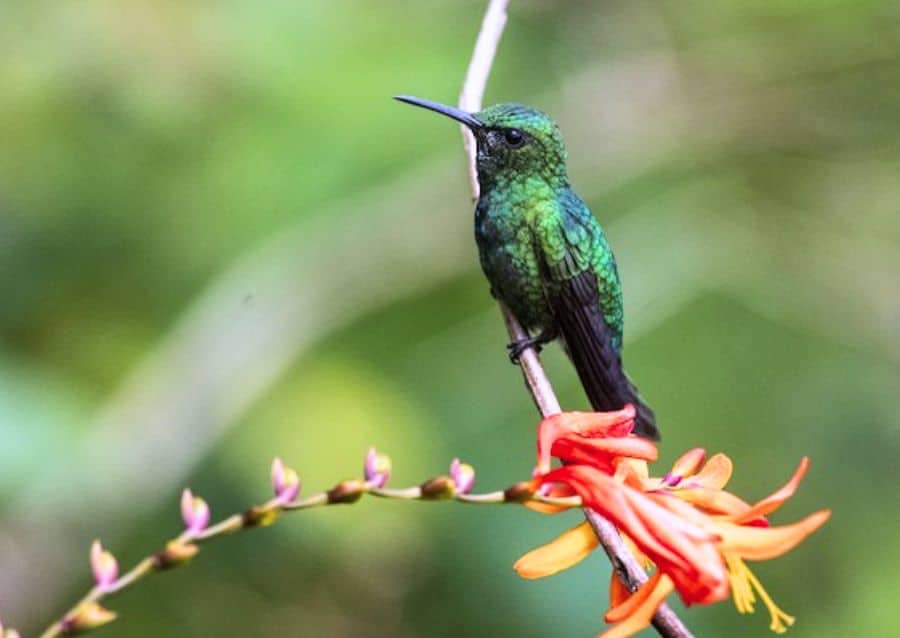
t’s not just its beauty that makes the Puerto Rican Emerald special, but also its unique ecological role in sustaining the forest’s floral diversity.
Puerto Rican Woodpecker
The rhythmic drumming of the Puerto Rican Woodpecker, or Carpintero de Puerto Rico, is a familiar sound for anyone walking through the dense canopy of El Yunque.
This striking bird, with its contrasting black and white feathers and a splash of red on its head, is the island’s sole woodpecker species.
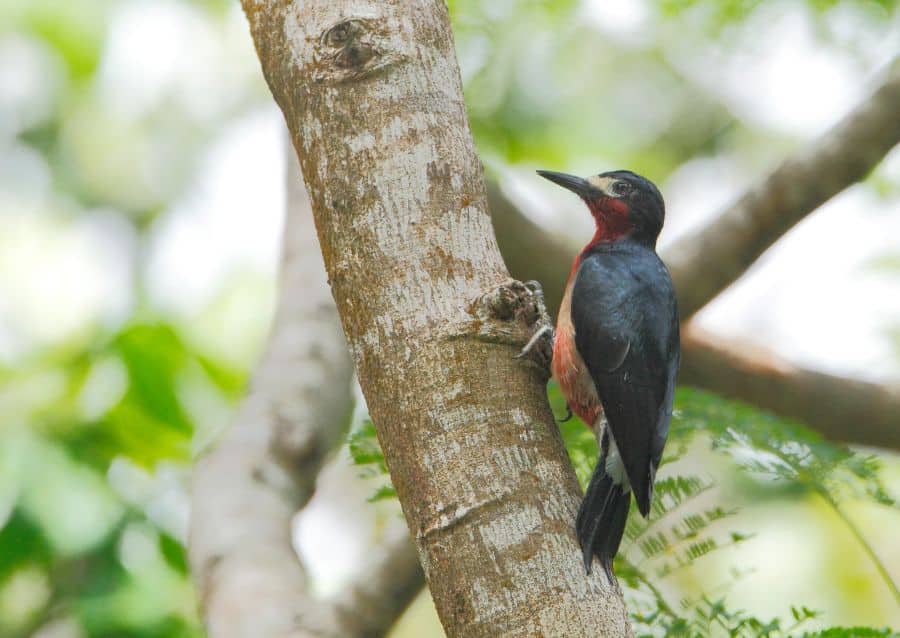
Besides excavating cavities in trees for nesting, these woodpeckers play a vital ecological role by controlling insect populations.
Their behavior, from their particular way of foraging for food to their communal nesting habits, underscores the complexity and diversity of bird life in the forest.
Puerto Rican Parrot
Perhaps the most iconic of all the birds in El Yunque is the Puerto Rican Parrot, or Amazona vittata. Once abundant across Puerto Rico, this brilliant green parrot has faced numerous threats, pushing it to the brink of extinction.
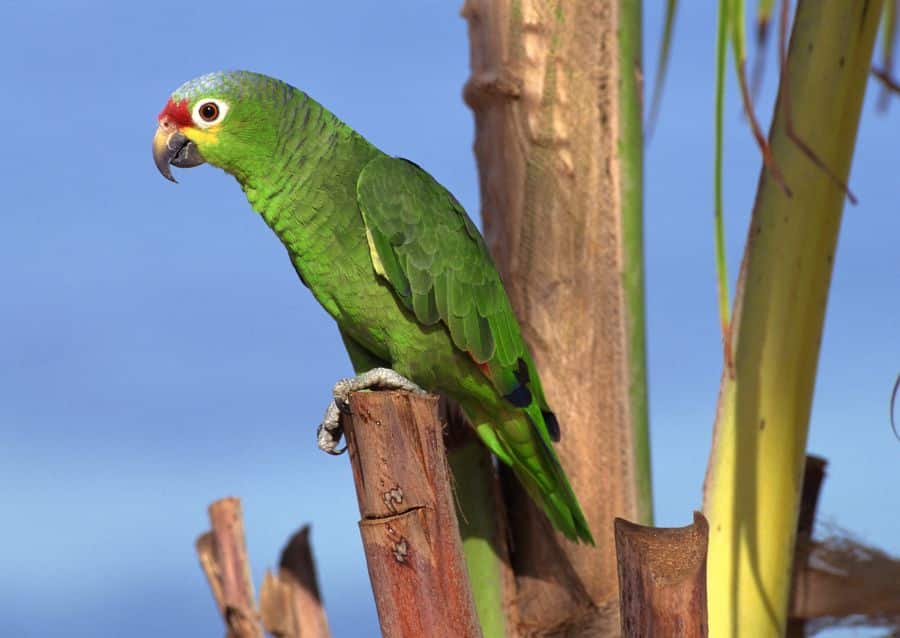
With fewer than 100 individuals left in the wild in recent years, concerted conservation efforts have been made to protect and revive this critically endangered species.
Breeding programs, habitat restoration, and public awareness campaigns are part of the multi-pronged approach to ensure that the calls of this charismatic parrot continue to echo through El Yunque.
Neotropical Migrant Birds
As seasons change, so does the avian tapestry of El Yunque. The forest plays host to a myriad of Neotropical migrant birds that travel vast distances between North and South America.
Species like the Black-and-white Warbler and the American Redstart temporarily call El Yunque home, bringing with them a burst of color and song.
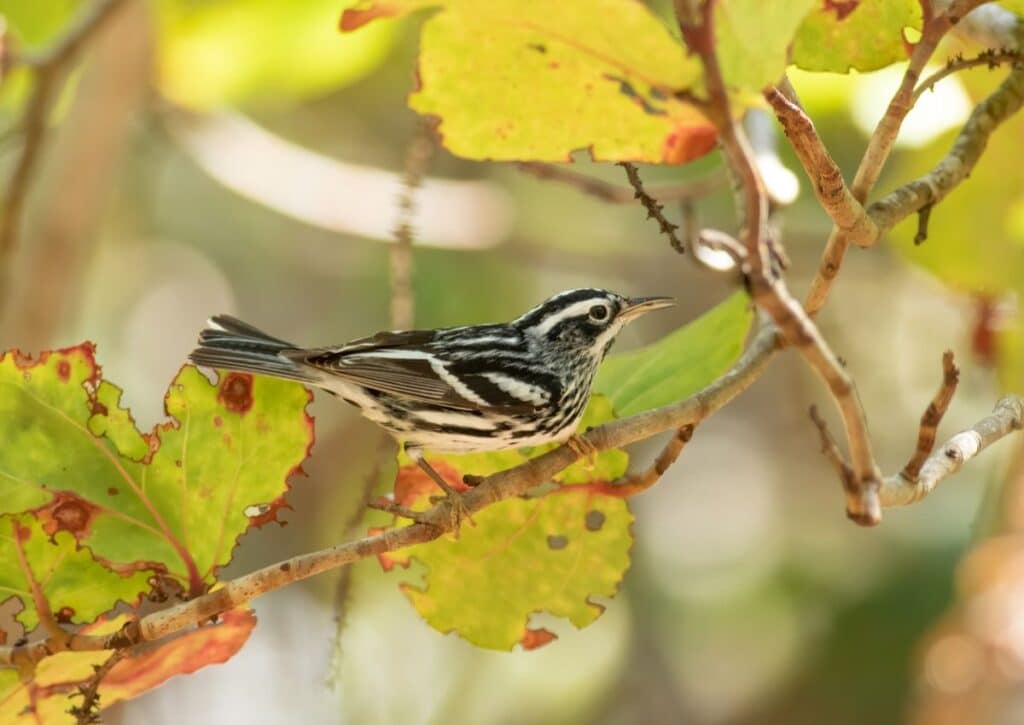
These migrants, though only seasonal residents, have a significant ecological impact, from seed dispersal to pest control.
Their migratory patterns, intricately linked with the health of habitats spanning two continents, highlight the global significance of conservation efforts.
Puerto Rican Tody
The diminutive Puerto Rican Tody, locally known as San Pedrito, adds a splash of color to El Yunque with its bright green body and ruby-red throat.
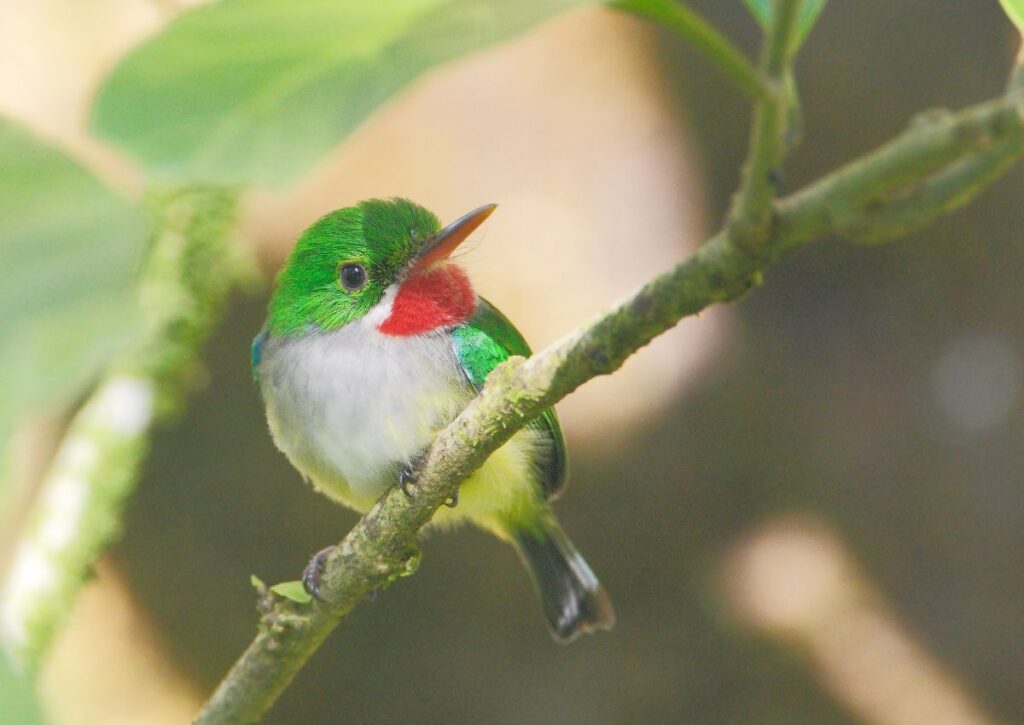
This tiny bird, often seen darting through the undergrowth, feeds predominantly on insects. Its vibrant appearance and distinct, sharp calls make it a favorite among birdwatchers.
Puerto Rican Vireo
With its melodious song filling the forest air, the Puerto Rican Vireo, or Bien-te-veo, is another of El Yunque’s endemic avian wonders.
Its olive-green upperparts and white underbelly provide a camouflage against the forest canopy.
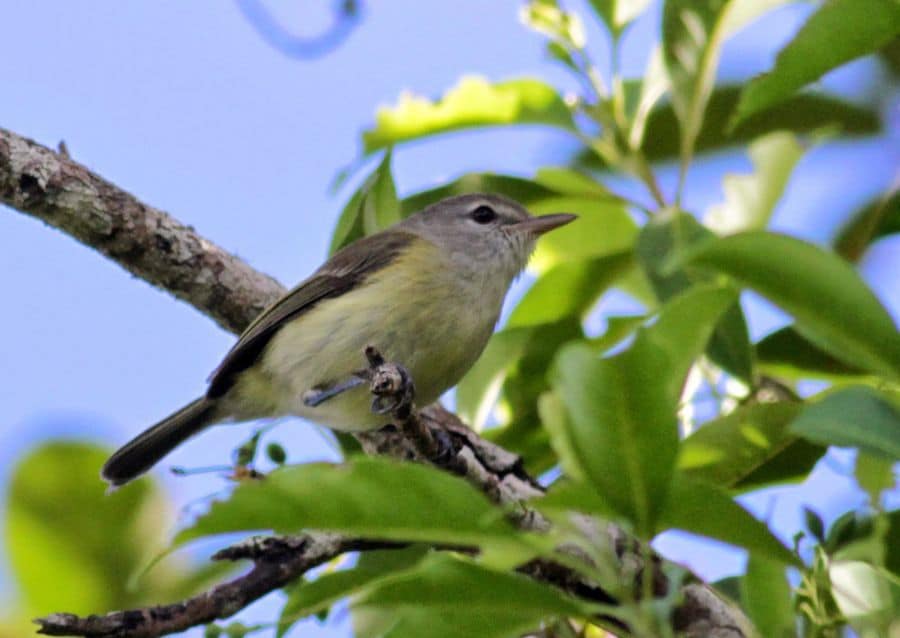
Though it primarily feeds on insects, the vireo occasionally indulges in fruits, contributing to the dispersal of seeds.
Puerto Rican Spindalis
The Puerto Rican Spindalis, or Reina Mora, is a feast for the eyes with its variegated plumage of blacks, yellows, and whites.
Often found in the forest’s higher elevations, this bird feeds on fruits and insects alike.
Their role as fruit consumers makes them vital for the propagation of various tree species within the rainforest.
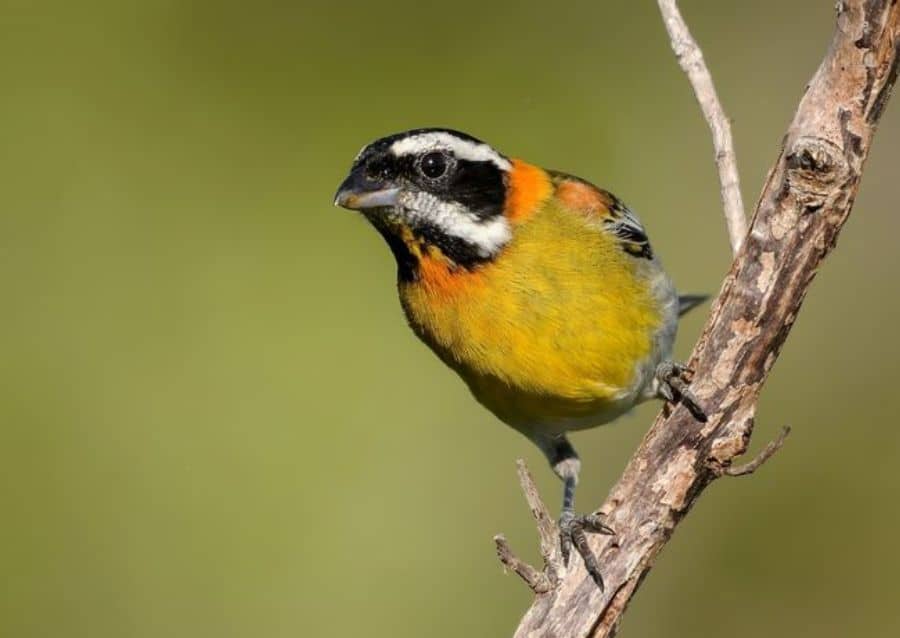
El Yunque National Forest offers a unique and diverse bird-watching experience, a testament to the island’s rich biodiversity.
From endemic species that have evolved specifically in this environment to migrant birds that showcase the interconnectedness of ecosystems, the avian life of El Yunque serves as a reminder of nature’s wonders and the importance of conservation.
Reptiles That Roam El Yunque
Nestled within the verdant expanses of El Yunque National Forest is a rich diversity of reptilian life.
These cold-blooded creatures, ranging from graceful lizards to elusive snakes, play crucial roles in maintaining the ecological balance of this tropical rainforest.
Puerto Rican Boa
Dominating the serpentine world of El Yunque is the Puerto Rican Boa (Epicrates inornatus). This impressive snake, which can reach lengths of up to 7 feet, is the largest native snake on the island.
Found lurking in caves, tree hollows, or coiled among dense vegetation, this boa serves as a top predator, keeping populations of smaller animals in check.
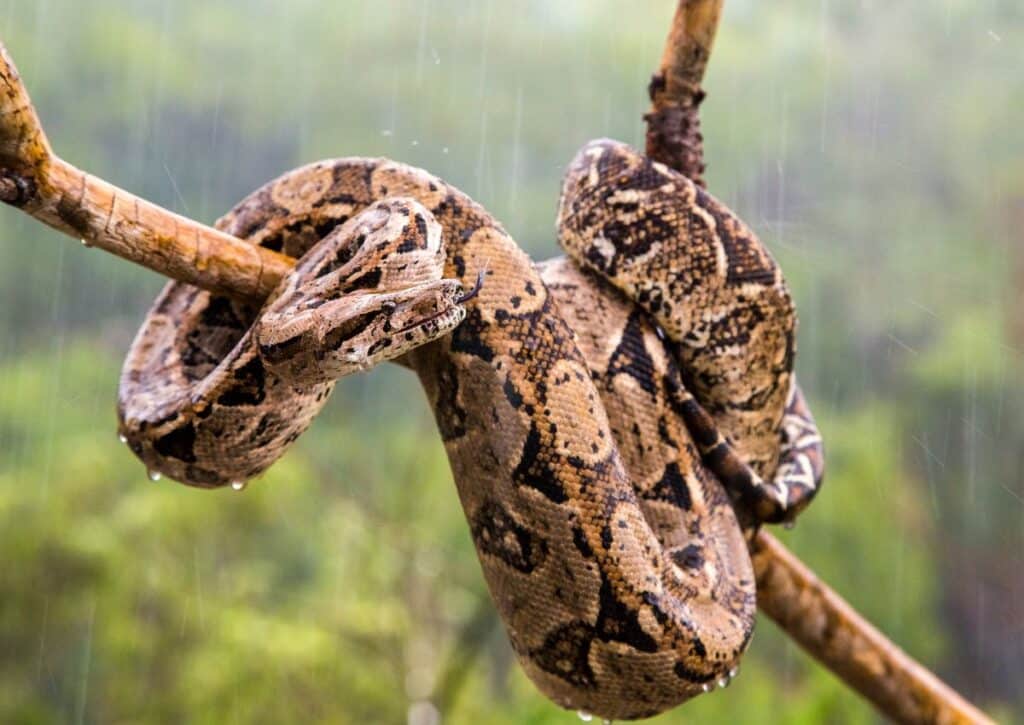
Their prehensile tail aids in climbing trees, showcasing their arboreal nature. In the dim light of dusk and dawn, they hunt for their prey, primarily feasting on birds and rodents.
The significance of the Puerto Rican Boa extends beyond its ecological role. It’s also woven into the cultural fabric of the island, often regarded with a mix of reverence and awe, symbolizing the wild essence of El Yunque.
Emerald Anole
The trees and underbrush of El Yunque are adorned with the vivid greens of the Emerald Anole (Anolis evermanni).
This small, agile lizard, characterized by its vibrant coloration, is an epitome of adaptability.
Their long toes enable them to traverse the forest with ease, while their keen eyes, which can move independently, are ever-watchful for insects to devour.
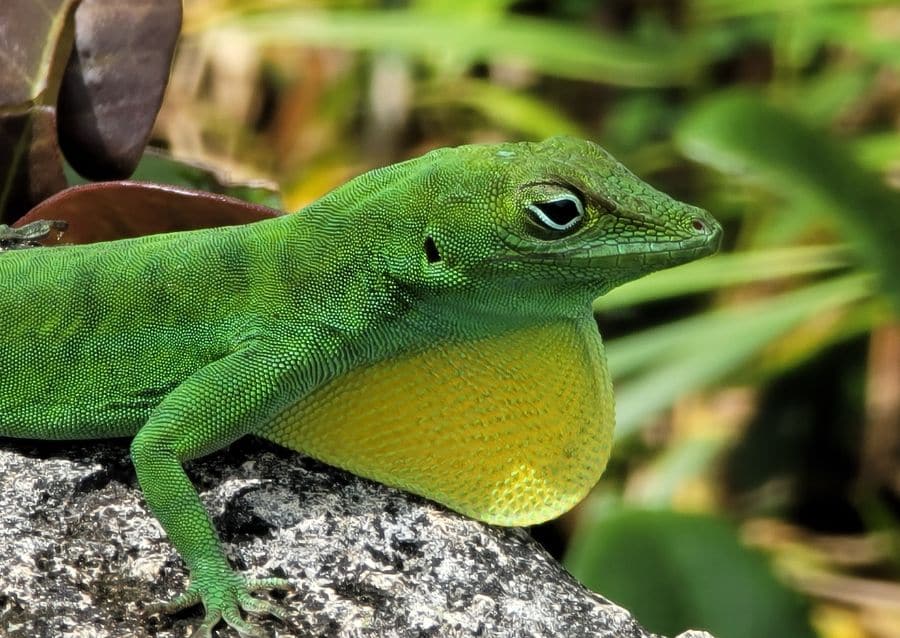
When faced with threats or during courtship displays, males flaunt a brilliant red dewlap, a flap of skin beneath their throat.
The Emerald Anole, besides being a visual treat, plays a significant role in controlling insect populations, thereby ensuring a balanced ecosystem.
Other Reptiles
El Yunque’s reptilian diversity doesn’t end with boas and anoles. The forest is also home to other lesser-known reptiles, each contributing to its intricate ecosystem.
The Gonatodes antillensis, a ground-dwelling gecko, scurries around the forest floor, its nocturnal habits making it a rare sight.
The Puerto Rican Crested Anole (Anolis cristatellus), though more common, is no less intriguing, with its distinct crested scales and diverse color forms.
Turtles, too, find a haven in the freshwater streams and ponds of El Yunque. The Puerto Rican Slider (Trachemys stejnegeri) can be seen basking on sunlit rocks or gracefully gliding in water.
The reptiles of El Yunque are not mere inhabitants but vital cogs in the forest’s ecological machinery. They help control pests, disperse seeds, and act as prey for larger predators, underlining the interconnectedness of life in this lush paradise.
Amphibians: The Sounds and Sightings
As night descends upon El Yunque National Forest, it comes alive with the harmonious chorus of its amphibious inhabitants.
Among them, two stand out, capturing the essence of this tropical paradise.
Coquí
When one thinks of the sounds of Puerto Rico, the melodious calls of the Coquí (Eleutherodactylus coqui) instantly come to mind.
This petite tree frog, barely the size of a coin, produces an enchanting nighttime serenade, crooning “ko-kee, ko-kee”.
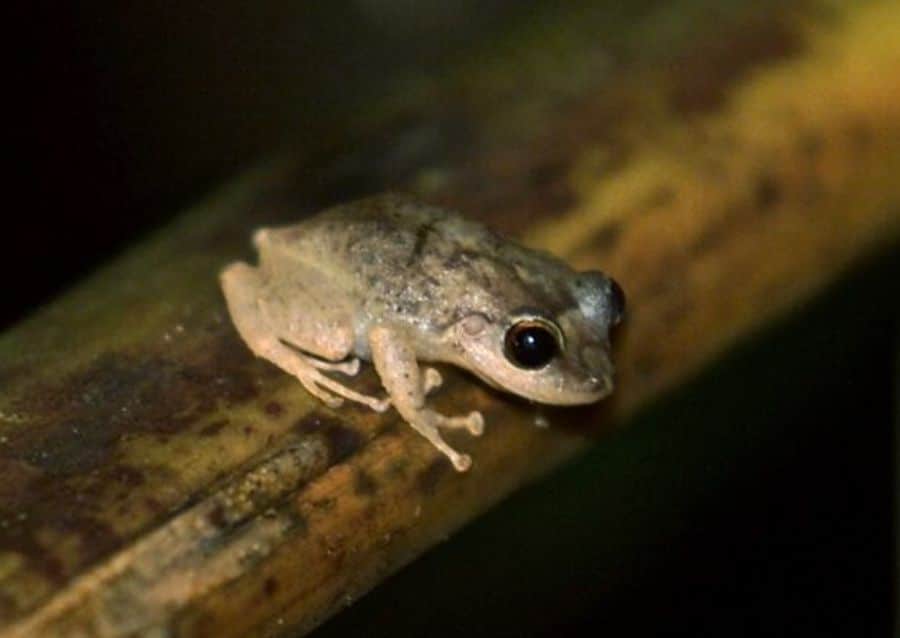
This call, from which the Coquí gets its name, resonates with Puerto Ricans worldwide as a symbol of their homeland.
Beyond being a cultural emblem, the Coquí plays a vital role in the ecosystem, feeding on insects and aiding in pest control.
Its unmistakable song and significant ecological contribution make it a cherished treasure of El Yunque.
Giant Toad
The Giant Toad, or Bufo marinus, offers a stark contrast with its substantial size and warty appearance.
Often found near water bodies or moist habitats in the forest, this robust amphibian gobbles up a variety of insects and even smaller vertebrates.
Serving as both predator and prey in the ecosystem, the Giant Toad plays a pivotal role in maintaining the delicate balance of El Yunque’s rich biodiversity.
Aquatic Life of El Yunque
The shimmering waters of El Yunque National Forest teem with an array of aquatic life, showcasing the forest’s biodiversity even beneath its surface.
Fish
Within the pristine streams and pools of El Yunque, various fish species dart and dance. Native species such as the Mountain Mullet and the Sirajo Goby are perfectly adapted to the swift currents and clear waters.
These fish not only offer a visual spectacle for visitors but also play a critical role in aquatic food chains, preying on smaller organisms and serving as food for larger predators.
Aquatic Invertebrates
A closer look into El Yunque’s waters reveals a microcosm of life in the form of aquatic invertebrates. From the nimble freshwater shrimp to the delicate damselflies, these creatures are essential players in the aquatic ecosystem.
They assist in breaking down organic matter, purifying the water, and serving as a vital food source for larger inhabitants.
El Yunque’s Endangered and Special Species
In the heart of El Yunque National Forest, a silent struggle ensues, emphasizing the balance between preservation and invasion, where some species face the brink of extinction while others thrive, often at the expense of natives.
Endangered Species of El Yunque Several species in El Yunque find themselves on the edge, their existence threatened by various factors.
The Puerto Rican Parrot, once abundant, is now critically endangered due to habitat loss and predation. The valiant conservation efforts, including captive breeding and habitat restoration, aim to reverse its declining numbers.
Similarly, species like the Puerto Rican Boa are under threat but are being closely monitored to ensure their survival. These efforts underscore the importance of maintaining El Yunque’s rich biodiversity.
Non-native Invasive Species While El Yunque is home to an array of native species, invasive ones like the Small Indian Mongoose have established a foothold. Introduced to control pests, the mongoose has had an adverse impact, preying on native species, including birds and reptiles.
Its unchecked growth highlights the unintended consequences of human intervention and the delicate balance of natural ecosystems.
In El Yunque, the dance between preservation and invasion serves as a potent reminder of nature’s fragility and the role humans play in its narrative.
Dangerous Animals in El Yunque
El Yunque National Forest, with its vibrant biodiversity, is a haven for a multitude of creatures. While many are benign or even endearing to onlookers, some pose potential risks and warrant caution for those treading its paths.
The Puerto Rican Boa, although not inherently aggressive to humans, can be intimidating due to its size. A chance encounter can be startling, and it’s advised to give this snake its space, avoiding any direct interaction.
Insects, particularly certain species of wasps and bees, thrive in the warm, wet environment of El Yunque. An unsuspecting visitor might inadvertently disturb a nest, leading to painful stings. It’s essential to be vigilant, especially when straying off designated paths.
Additionally, the Giant Centipede (Scolopendra gigantea), which can reach impressive lengths, prowls the forest floor. Its venomous bite, while not fatal, can cause significant pain and discomfort.
Venturing into El Yunque is a rewarding experience, but awareness of its wild inhabitants is crucial. Respect their space, tread lightly, and the forest unveils its wonders safely.
Also Read: TOP 23 ALL-INCLUSIVE RESORTS IN PUERTO RICO FOR AN UNFORGETTABLE VACATION
15 Tips to See Animals in El Yunque National Forest
El Yunque National Forest, located in northeastern Puerto Rico, is the only tropical rainforest in the U.S. National Forest System. It’s a biodiversity hotspot, home to a range of unique animals.
If you’re keen to spot some of this wildlife during your visit, here are 15 tips to help you maximize your chances:
- Visit Early or Late: Many animals are crepuscular, meaning they’re most active during the dawn and dusk hours. Arriving early in the morning or late in the afternoon can increase your chances of sightings.
- Move Quietly: Noises can scare animals away. Tread softly, whisper, and avoid making sudden movements.
- Stay on Designated Trails: Straying off the path can harm the forest’s ecosystem and disturb wildlife habitats. It’s best for both the forest and its inhabitants if you stick to the trails.
- Hire a Local Guide: A knowledgeable guide can not only help you spot animals but also share fascinating insights about their habits and habitats.
- Pack Binoculars: These can be particularly useful for spotting birds and distant creatures.
- Look Up and Down: While walking, periodically scan the treetops for birds and the ground for smaller creatures like lizards and amphibians.
- Dress in Muted Colors: Bright colors can alarm animals or make you easily noticeable. Wear earth tones to blend in better with the surroundings.
- Be Patient: Sometimes, the key to spotting wildlife is simply to stop, wait, and watch.
- Avoid Using Flash: If you’re taking photographs, avoid using flash, as it can startle and distress animals.
- Listen Carefully: Often, you’ll hear an animal before you see it. The sounds of rustling leaves or distant calls can be a clue to an animal’s presence.
- Check Water Sources: Animals often visit streams, ponds, and other water sources. These are good spots for potential sightings.
- Research Ahead: Familiarize yourself with the common species of El Yunque so you know what to look for and where.
- Stay Safe: Remember that wild animals can be unpredictable. Always maintain a safe distance and never feed or try to touch them.
- Respect the Ecosystem: Remember that you’re a guest in their home. Leave no trace, take only photos, and pack out all trash.
- Visit the El Portal Visitor Center: Before heading deep into the forest, stop by the visitor center. The staff can provide recent sightings information and recommend prime wildlife-viewing spots.
By following these tips and maintaining respect for the forest and its inhabitants, you can have a rewarding experience in El Yunque National Forest, witnessing its rich fauna in their natural habitat.
Conclusion
El Yunque National Forest stands as a testament to nature’s beauty and resilience. Within its lush confines, a symphony of life plays out, from the tiniest insect to the majestic Puerto Rican Parrot.
While the forest invites exploration and wonder, it also calls for respect and awareness. Recognizing the role each creature plays, even those posing potential dangers, deepens our appreciation of this ecological masterpiece.
As guardians of the environment, it is our shared responsibility to tread lightly, ensuring El Yunque remains a sanctuary for all its inhabitants for generations to come.

